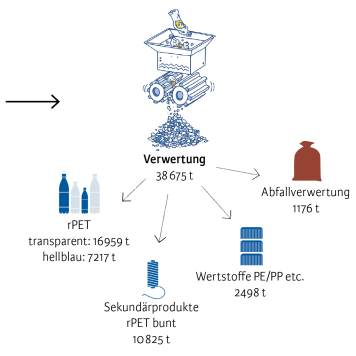SusTec and ESD researchers examine and discuss the dimensions of a sustainable circular economy in “die Volkswirtschaft”
The authors propose a holistic definition and measurement of a sustainable circular economy, linking material circularity with environmental and economic sustainability. The inherent trade-offs and rebounds are discussed and illustrated at the example of the recycling of PET and glass bottles in Switzerland.

The concept of the circular economy promises to save the planet while ensuring prosperity. However, merely circulated materials and products will not necessarily solve our ecological challenges or guarantee economic growth. The vision is of a world where materials are perfectly circulated, with no waste or negative impacts. In practice, however, achieving such a vision is complex, involving trade-offs and rebounds.
To illuminate this complexity, this paper disentangles the circular economy idea into two dimensions: material circularity and sustainability. The authors claim that these dimensions may contribute differently to the overall benefit of a circular solution, and that all of them must analyzed in detail to judge whether the solution at hand is truly sustainable and circular. The authors conclude that businesspeople, policymakers and researchers share a common duty to assess the contribution of our products, policies or research outputs to a sustainable circular economy, understand the inherent trade-offs and then make informed decisions based on individual intentions and values.
The article was published in the July edition of “Download die Volkswirtschaft”